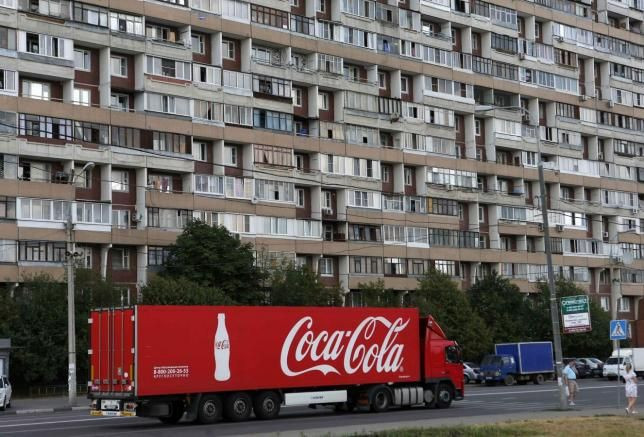Coca-Cola Co (KO) Q1 Earnings Preview 2015: Can 'Super Milk' And Protein Drinks Help Coke Make A Shift?

Americans are increasingly pushing their shopping carts past the carbonated soft drink aisle and heading toward teas, waters, energy drinks and bottled iced coffees. No large beverage maker has more reason to be concerned about these changing tastes than Coca-Cola Company (NYSE:KO), which derives nearly half of its sales in North America.
U.S. soda consumption fell for the 10th consecutive year, by nearly 1 percent in 2014, and it’s expected to drop further this year, according to Beverage Marketing. And as consumers grow increasingly skeptical of the healthfulness of sugar substitutes, diet soda sales fell even faster last year -- by about 6 percent.
Brian Nelson, head of equity research at investment analyses provider Valuentum Securities, says the Coca-Cola Company needs to reposition itself. “The company understands that the heavy, sugary soda trend has reached its peak," he says.
Unlike its main rival, PepsiCo, Inc. (NYSE:PEP), which can depend on brands such as Cheetos, Quaker Oats oatmeal and Sabra hummus, when demand for its syrup-based sparkling beverages falls, Coca-Cola remains wholly a beverage company.
As part of its effort to diversify its drinks portfolio, the 123-year-old company bought a 16 percent stake in the Keurig Green Mountain last May. The Vermont company makes K-cups -- tiny disposable single-serve coffee filters. Last August, Coca-Cola formed a strategic alliance with Monster Beverage Corporation (NASDAQ: MNST), the sixth-largest beverage company based on U.S. market share.
Earlier this year, Coca-Cola’s Fairlife “super milk” hit store shelves to mixed reviews, and on Friday the company said it will buy Chinese protein drink maker Xiamen Culiangwang Beverage Technology Co. for $400 million.
The deals add to the company's existing menu of noncarbonated refreshments, including Fuze Tea, Minute Maid and Smart Water.
Emerging-market consumers are still guzzling Coca-Cola’s sugary drinks, especially in Africa, Asia and Eastern Europe, where the company saw 10 percent sales growth last year, but those profits are shrinking as the U.S. dollar continues its strong run.
When Coca-Cola reports first-quarter 2015 earnings after markets close in New York on Wednesday, executives will update investors on its plan to expand its product line beyond carbonated sodas. Analysts polled by Thomson Reuters expect the Atlanta company to report a 0.5 percent rise in revenue from the same quarter last year, from $10.58 billion to $10.63 billion. Net profit is expected to increase by 15.8 percent, from $1.62 billion to $1.87 billion. Earnings per share is seen increasing from 36 cents to 43 cents.
Like other multinationals, the company had a mixed year in 2014, doing well in its operations but hit hard by a stronger dollar. Last year, Coca-Cola revenue dropped 2 percent to $46 billion, while profits dropped 17 percent to $7.01 billion.
“We anticipate continued challenging macroeconomic conditions in many markets around the world,” company CFO Kathy Waller said during a conference call with analysts in February.
With the heavy currency impediments and declining demand for carbonated sodas in key markets (including most of Europe), Coca-Cola is facing a third consecutive annual decline in revenue this year. The company’s fourth-quarter profit tumbled 55 percent, to $770 million, the eighth consecutive year-over-year decline.
Valuentum Securities' Nelson says Coca-Cola is also depending on its traditional lure for shareholder: dividends. And its price to earnings ratio -- a measure of a company’s current share price compared to its per share earnings -- is high for a company of its size and age. The ratio stands at about 25, higher than main rival PepsiCo and considerably higher than the historical average of 15 for S&P 500 companies.
“If you look at its reported earnings per share in the last several years, they peaked in 2010, and they’ve actually fallen in the past several years,” Nelson said. “It’s being propped up on the strength of its dividends.”
Like many major corporations, Coca-Cola is also spending billions of dollars to make its shares more attractive through a series of stock buybacks. Since 2009, the company has pulled 208 million shares from the market, reducing its available shares by nearly 5 percent, according to its regulatory filings.
© Copyright IBTimes 2024. All rights reserved.




















